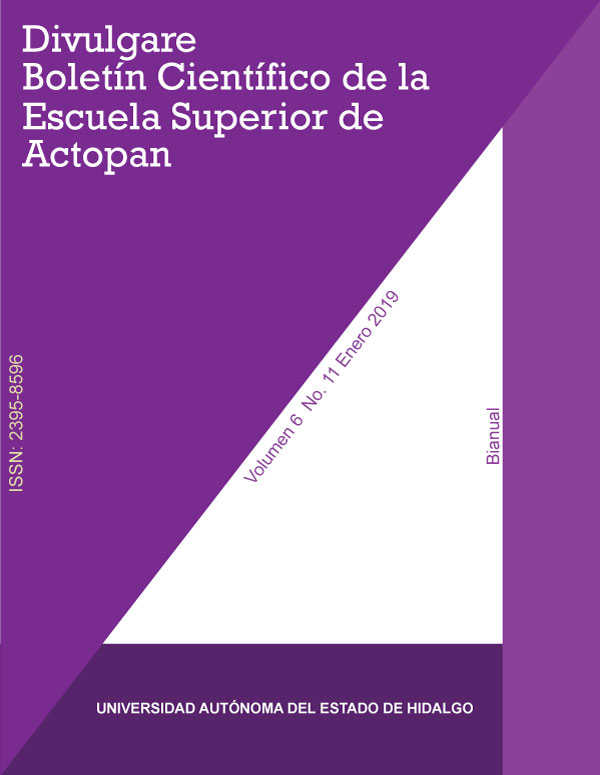Benefits of Mindfulness P ractice and the A ttentional P rocess: a T heoretical R eview of their R elationship
Abstract
Meditation, although it has been practiced for more than 2,500 years, has now returned to a visible force that has attracted the attention of researchers from different branches: psychology, medicine and neurosciences have turned to know the usefulness of strategies of meditation in improving the health of people. Mindfulness, a meditation defined as "a form of attention that is non -elaborative, non - judgmental, centered in the present, in which every thought, feeling or sensation that appears in the attentional field is recognized and accepted as itis" (Bishop et al. al., 2004), has been related as a useful strategy for modifying neural functional networks and improving attention. Mindfulness meditation through its three main strategies, focused attention, open monitoring and lovingkindness, has been taken up by psychology applying it within different cognitive interventions. This document describes some of the most recent research on Mindfulness meditation and its relationship with the improvement of Attention, as well as the agreements and discrepancies that exist at present about its possible benefits, which makes the investigation of meditation and brain activity in a cutting -edge subject in the field of psychology and neurosciences
Downloads
References
Bishop, S. R., Lau, M., Shapiro, S., Carlson, L., Anderson, N., Carmody, J., Segal, Z., Abbey, S., Speca, M., Velting, D. &Devins, G. (2004). Mindfulness: A proposedoperationalDefinition. ClinicalPsychology: Science and Practice 11(3) 230-241 doi: 10.1093/clipsy/bph077
Carboni, J. A., Roach, A. T. & Fredrick, L. D. (2013) Impact of Mindfulness Training on the Behavior of Elementary Students with Attention-Deficit/Hyperactive Disorder. Research in Human Development 10(3), 234-251.
Chiesa, A., Serretti, A. &Jakobsen, J. C. (2013) Mindfulness: Top-down or bottom -up emotion regulation strategy? Clinical Psychology Review33 82 -96.doi: http://dx.doi.org/10.1016/j.cpr.2012.10.006
Funes, M. J. &Lupiáñez, J. (2003) La teoría atencional de Posner: una tarea para medir las funciones atencionales de Orientación, Alerta y Control Cognitivo y la interacción entre ellas. Psicothema.15(2), 260-266.
Jha, A. P., Morrison, A. B., Dainer -Best, J., Parker, S., Rostrup, N. & Stanley, E. A. (2015) Minds “At Attention”: Mindfulness training curbsattentionallapses in MilitaryCohorts. PLoS ONE 10(12)doi:10.1371/journal.pone.0116889
Josefsson, T., Lindwall, M. &Broberg, A. (2014) Theeffects of a Short-term Mindfulness BasedInterventiononSel -reported Mindfulness, Decentering, ExecutiveAttention, PsychologicalHealt, and Coping Style: ExaminingUnique Mindfulness Effects and ediators. Springer 5 18-35.
MacCoon, D. G., MacLean, K. A., Davidson, R. J., Saron, C. D. &Lutz A. (2014) No sustained attention differences in a longitudinal randomized trial comparing Mindfulness based stress reduction versus active control. PLoS ONE 9(6) doi: 0.1371/journal.pone.0097551
Mitchell, J. T., Zylowska, L. &Kollins, S. H. (2015) Mindfulness Meditation Training forAttention - Deficit/HyperactivityDisorder in Adulthood: CurrentEmpiricalSupport, TreatmentOverview, and FutureDirections. CognBehavPract. (22)2 172-191.
Morrison, A. B., Goolsarran M., Rogers, S. &Jha, A. P. (2014) Taming a wanderingattention: Short-form Mindfulness training in studentcohorts. Frontiers in Human Neuroscience7doi: 10.3389/fnhum.2013.00897.
Mrazek, M. D., Franklin, M. S., Phillips, D. T., Baird B. &Schooler, J. W. (2013) Mindfulness Training ImprovesWorkingMemoryCapacity and GRE Performance WhileReducingMindWandering. PsychologicalScience 24(5) 776-
Ostrosky -Solís, F., Gómez, P. E., Chayo-Dichy, R. & Flores, J. C. (2004) ¿Problemas de Atención? Un programa para su estimulación y rehabilitación. México, México: American Book Store.
Pérez, M. A. y Botella, L. (2006) Conciencia Plena ( Mindfulness) y Psicoterapia: Concepto, Evaluacion y Aplicaciones Clínicas. Revista de Psicoterapia XVII (66/67), 79-120.
Pollak, S. M., Pedulla, T. y Siegel, R. D. (2016) Sentarse Juntos. Habilidades esenciales para una psicoterapia basada en el Mindfulness. Nueva York, EUA: Desclée De Brouwer.
Posner, M.I. (1978). Chronometric explorations of mind. Hillsdale, NJ: Erlbaum.
Posner, M. I. &Petersen, S. E. (1990) Theattentionsystem of the human brain. AnnualReview of Neuroscience, 13, 25 -42.
Rosselló, J. (1998) Psicología de la Atención. Introducción al estudio del mecanismo atencional. Madrid, España: Ediciones Pirámide.
Santiago de Torres, J., Tornay, M. F. & Gómez, M. E. (2006) Procesos Psicológicos Básicos. Madrid, España: McGraw Hill.
Shennan, C., Payne, Sh. &Fenlon, D. (2011) Whatistheevidenceforthe use of Mindfulness-basedinterventions in cáncer care? A review. Psycho-Oncology 20 681-697 doi:10.1002/pon.1819.
Tang, Y., Hölzel, B. K. &Posner, M. I. (2015) TheNeuroscience of Mindfulnessmeditation. NatureReviews/Neuroscience 16 213-225.
Vásquez-Dextre, E. R. (2016) Mindfulness: Conceptos generales, psicoterapia y aplicaciones clínicas. Revista de Neuro-Psiquiatría LXXIX (1) 42-51











